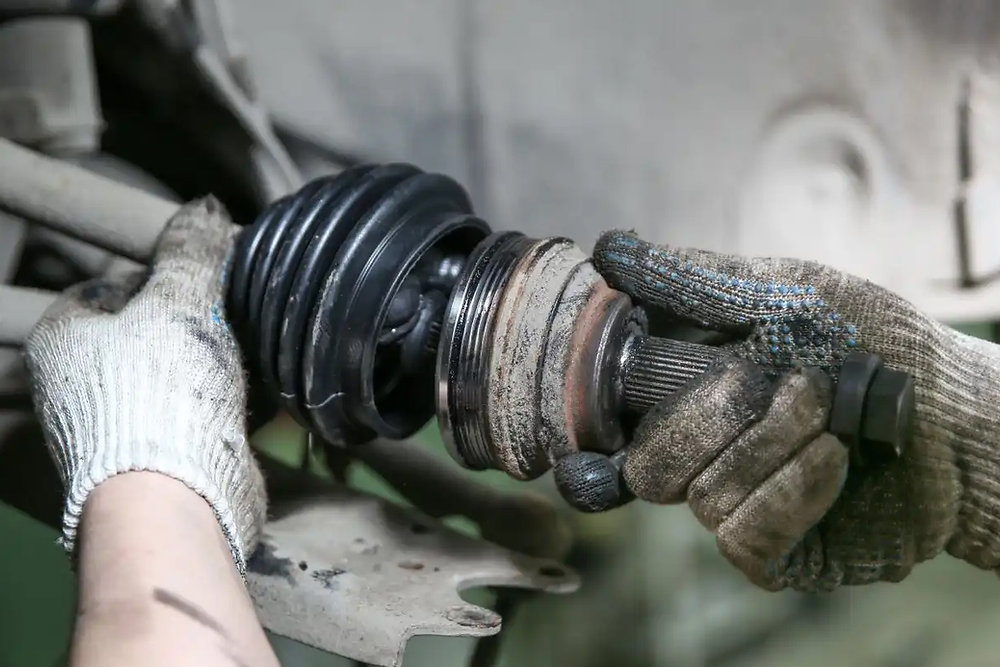CV joints are critical for smooth steering and control. Advanced joint failure often causes unusual handling and vibration. Steering wheel shakes signal uneven torque transfer to wheels. Early detection prevents further drivetrain damage and potential accidents. Drivers should monitor symptoms during acceleration and cornering carefully. Healthy CV joints maintain stability and consistent vehicle response. Understanding warning signs improves driving safety and reliability effectively. Timely maintenance preserves torque delivery and reduces component wear. Early instability detection protects people and vehicles against unanticipated threats. Specialist in Auto Repair in St. Louis, MO can quickly diagnose and remedy such difficulties.
Torque Transfer Disruption
CV joints transmit torque evenly from transmission to front wheels. Worn joints cause irregular torque distribution during acceleration and turns. Uneven torque results in noticeable shaking of the steering wheel. Repair or replacement restores smooth torque and handling performance quickly. Mechanics test torque flow to identify failing joints accurately. Proper torque transfer ensures vehicle remains controllable under all conditions. Damaged joints increase stress on suspension and drivetrain components. Healthy joints maintain consistent power delivery to both wheels effectively.
Outer Joint Wear
Outer CV joints handle angular rotation during turns consistently. Worn outer joints produce clicking popping and steering wheel vibration. Noise and shake often worsen at low speed manoeuvring. Replacing damaged outer joints restores smooth rotation and safe handling. Mechanics inspect outer joints using slow turns and torque tests. Proper maintenance prevents further stress on connected axles and transmission. Damaged outer joints compromise steering response and vehicle stability consistently.
Inner Joint Contribution
Inner CV joints allow axial movement along the drive shaft. They absorb suspension travel while maintaining smooth torque delivery constantly. Worn inner joints reduce axial flexibility causing steering wheel shake. Replacement restores full motion and improves handling and stability. Mechanics examine inner joint travel to identify wear before failure. Proper inner joint function protects transmission and other drivetrain components. Damaged inner joints increase stress on axles reducing vehicle control. Healthy inner joints ensure consistent power transfer during cornering and acceleration. Axial motion flexibility is critical for steering stability and driveline efficiency.
Driving Stress Factors
Frequent sharp turns and heavy loads increase CV joint stress. Aggressive driving accelerates wear causing steering wheel shake and noise. Gentle driving reduces stress and extends joint lifespan effectively. Mechanics recommend inspection after prolonged city driving or high load use. Early intervention prevents sudden steering instability during normal driving conditions.
Conclusion
Steering wheel shakes often indicate advanced CV joint wear immediately. Outer and inner joint issues reduce torque transfer and handling stability. Boot damage and lubrication loss accelerate vibration and internal component deterioration. Early inspection prevents further drivetrain damage and restores smooth steering. Repair or replacement ensures stable torque delivery and safe driving. Proper maintenance preserves joint integrity and protects vehicle control consistently. Acting quickly ensures safe smooth steering and prevents accidents always.






More Stories
Low Mileage Used Vehicles Delivering Long Term Ownership Satisfaction Benefits
Turbo Wastegate Rattle on Jaguar XE/XF: What Causes the Metallic Noise?
Crystal Clear Windows Simple Methods for Streak-Free Glass